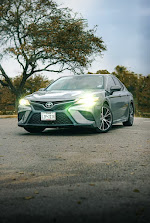Electric car
Electric autos have been around a great deal longer than today's Tesla Motors or even the General Motors EV1 of 20 years prior. Truth be told, electric autos seemed much sooner than the inner ignition sort, and visionaries have never quit attempting to make them work both out and about and as a business recommendation. An absence of chronicled
point of view now and again prompts mistaken assumptions of how things came to be as they are presently, so we should take the long perspective of the street that got us here.
Begin in the 1830s, with Scotland's Robert Anderson, whose mechanized carriage was fabricated at some point somewhere around 1832 and '39. Batteries (galvanic cells) were not yet rechargeable, so it was more parlor trap ("Look! No steed nor bull, yet it moves!") than a transportation gadget. Another Scot, Robert Davidson of Aberdeen, fabricated a model electric train in 1837. A greater, better form, showed in 1841, could go 1.5 miles at 4 mph towing six tons. At that point it required new batteries. This great execution so frightened railroad specialists (who considered it to be a risk to their employments tending steam motors) that they decimated Davidson's demon machine, which he'd named "Galvani."
Electric car
Batteries that could be revived tagged along in 1859, making the electric-auto thought more reasonable. By 1890, a Scottish-conceived physicist living in Des Moines, Iowa, William Morrison, connected for a patent on the electric carriage he'd manufactured maybe as ahead of schedule as 1887. It showed up in a city parade in 1888, as indicated by the Des Moines Register. With front-wheel drive, 4 torque, and a reported top velocity of 20 mph, it had 24 battery cells that required energizing each 50 miles. Morrison's self-moved carriage was a sensation at the 1893 Chicago World's Fair, which was otherwise called the celebrated internationally "World's Columbian Exhibition." Morrison himself was more intrigued by the batteries than in portability, yet he'd started the creative ability of different creators.
Tags:
Car Talk
